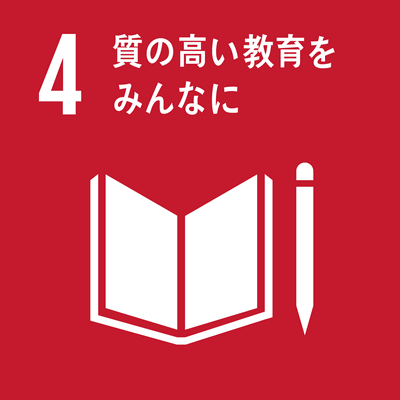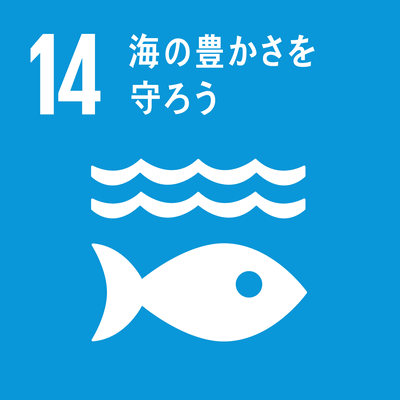シラバス表示
シラバスの詳細な内容を表示します。
→ 閉じる(シラバスの一覧にもどる)
科目の基本情報
| 開講年度 | 2022 年度 | |
|---|---|---|
| 開講区分 | 工学研究科(博士前期課程)機械工学専攻 | |
| 領域 | 主領域 : A; 副領域 : E, F | |
| 受講対象学生 |
大学院(修士課程・博士前期課程・専門職学位課程) : 1年次, 2年次 |
|
| 選択・必修 | 選択 |
|
| 授業科目名 | 固体物理学特論 | |
| こたいぶつりがくとくろん | ||
| Solid State Physics | ||
| 単位数 | 2 単位 | |
| ナンバリングコード | EN-SYST-5
|
|
| 開放科目 | 非開放科目 | |
| 開講学期 |
前期 |
|
| 開講時間 |
木曜日 5, 6時限 |
|
| 授業形態 |
ハイブリッド授業 * 状況により変更される可能性があるので定期的に確認して下さい
「オンライン授業」・・・オンライン会議ツール等を利用して実施する同時双方向型の授業 |
|
| 開講場所 | 工学研究科 11番教室 または zoomによる遠隔授業 | |
| 担当教員 | 小竹 茂夫(大学院工学研究科機械工学専攻),河村 貴宏(大学院工学研究科機械工学専攻) | |
| KOTAKE, Shigeo KAWAMURA, Takahiro |
||
| SDGsの目標 |
|
|
| 連絡事項 | * 状況により変更される可能性があるので定期的に確認して下さい |
|
学修の目的と方法
| 授業の概要 | 固体物理学は,量子力学を基礎に,電子やフォノン,光の振る舞いを通して,様々な物質の性質を明らかにする学問である.機械工学では,鉄鋼材料を始めとした構造材料の強度を研究対象とするが,これらの力学物性(弾性・塑性・疲労・破壊)を固体物理学の観点から明らかにすることは,あまりなされてこなかった.ところが近年,第一原理計算等の固体物理の計算法が,フリーソフトとして万人に開放されてきたことから,固体物理学による解析が身近になり,これを利用した材料開発や機械工学への応用が近年,求められている.そこで本講義では,連続して行う「固体物性演習」と連携して,演習で第一原理計算等による固体物理の計算をおこなうと共に,特論では,固体物理全般の知識を専門書を輪講しながら学ぶ.特にbcc結晶の強磁性材料である鉄鋼材料の力学物性は,合金化による電子密度や磁壁と転位の相互作用や,パイエルスポテンシャル等の議論に大きく影響されることから,バンド構造,磁性や転位等の振る舞いを深く理解する必要がある.そこで本講義では,固体物理学を広く学ぶことで,これらの議論の背景となる知識を紹介する. 一方,固体物理学で明らかにされた材料の各種パラメーターは固体熱力学を通して,結晶相の安定性が議論される.特に鉄合金材料の力学物性は,合金化によるオーステナイトやフェライト,マルテンサイト,セメンタイト相等に代表される相の安定性の温度や応力による変化に大きく影響されることから,固体熱力学に関する知識も書籍等を輪講することで紹介する. 他方,本講義は,研究室の大学院生に,研究に必要な知識を与える場としても活用していることから,時には固体物性に関わらず,制御理論や量子コンピュター,人工知能,プログラミング,ワンボードマイコンの使用法等,様々な話題を取り上げ,講義を行う.内容は,毎年,講義の始めに,受講者と相談して決めることから,特に注意されたい. Solid state physics is the study of the properties of various materials based on the behavior of electrons, phonons, and light based on quantum mechanics. In mechanical engineering, the strength of structural materials, including steel materials, is the subject of research. However, it has not been often clarified that these mechanical properties (elasticity, plasticity, fatigue, and fracture) are from the viewpoint of solid-state physics. There was no. However, in recent years, solid-state physics calculation methods such as first-principles calculations have been open to everyone as free software, so analysis by solid-state physics has become familiar, and the use of this method in material development and mechanical engineering Applications have been required in recent years. Therefore, in this lecture, the solid state physics is calculated by the first-principles calculation and the like in cooperation with the continuous "Seminar in Solid State Physics". Learn while learning. In particular, the mechanical properties of steel materials, which are ferromagnetic materials of bcc crystals, are greatly affected by the discussion of the electron density and the interaction between domain walls and dislocations due to alloying and the Peierls potential. You need to have a deep understanding of the behavior of. Therefore, in this lecture, we will introduce the knowledge behind these discussions by studying solid state physics widely. On the other hand, the stability of the crystalline phase is discussed through the solid-state thermodynamics of various parameters of the material revealed by solid-state physics. In particular, the mechanical properties of iron alloy materials are greatly affected by changes in the stability of phases such as austenite, ferrite, martensite, and cementite phases due to alloying due to temperature and stress. It will be introduced through a series of lectures. On the other hand, since this lecture is also used as a place to give graduate students in the laboratory the knowledge necessary for research, sometimes regardless of solid physical properties, control theory, quantum computers, artificial intelligence, programming, one-board Lectures will be given on various topics such as how to use microcomputers. Particular attention should be paid to the content, which is determined each year at the beginning of the lecture in consultation with the students. |
|---|---|
| 学修の目的 | ・金属や半導体等の電子論が理解できる. ・第一原理計算の理論的背景を理解できる. ・バンド構造を用いた議論ができる. ・逆格子ベクトルが理解できる. ・結晶の対称性による分類を理解できる. ・相の安定性を議論できる. ・第一原理計算ソフトの結果を理解できる. ・フォノンによる熱物性を理解できる. ・磁性材料の性質を理解できる. ・誘電体の性質を理解できる. ・超伝導現象が理解できる. ・電気伝導や熱伝導現象が理解できる. ・ Understand the electronic theory of metals and semiconductors. ・ Understand the theoretical background of first-principles calculations. ・ Discuss using the band structure. ・ Understand reciprocal lattice vectors. ・ Understand classification by crystal symmetry. ・ Discuss phase stability. ・ Understand the results of first-principles calculation software. ・ Understand the thermophysical properties of phonons. ・ Understand the properties of magnetic materials. ・ Understand the properties of dielectrics. ・ Understand superconductivity. ・ Understand electrical and thermal conduction phenomena. |
| 学修の到達目標 | ・金属や半導体等の電子論が理解できる. ・第一原理計算の理論的背景を理解できる. ・バンド構造を用いた議論ができる. ・逆格子ベクトルが理解できる. ・結晶の対称性による分類を理解できる. ・相の安定性を議論できる. ・第一原理計算ソフトの結果を理解できる. ・フォノンによる熱物性を理解できる. ・磁性材料の性質を理解できる. ・誘電体の性質を理解できる. ・超伝導現象が理解できる. ・電気伝導や熱伝導現象が理解できる. ・ Understand the electronic theory of metals and semiconductors. ・ Understand the theoretical background of first-principles calculations. ・ Discuss using the band structure. ・ Understand reciprocal lattice vectors. ・ Understand classification by crystal symmetry. ・ Discuss phase stability. ・ Understand the results of first-principles calculation software. ・ Understand the thermophysical properties of phonons. ・ Understand the properties of magnetic materials. ・ Understand the properties of dielectrics. ・ Understand superconductivity. ・ Understand electrical and thermal conduction phenomena. |
| ディプロマ・ポリシー |
|
| 成績評価方法と基準 | 出席:p点(30点)、発表:q点(30点),レポート:r点(40点)の p+q+rの点を総合的に評価する。 60点以上を合格とする。 Attendance: p point (30 points), presentation: q point (30 points), report: r point (40 points) The point of p + q + r is comprehensively evaluated. A score of 60 or more is considered acceptable. |
| 授業の方法 | 講義 |
| 授業の特徴 |
Moodleを活用する授業 その他、能動的要素を加えた授業(ミニッツペーパー、シャトルカードなど) 教員と学生のやり取りは日本語でも、英語による論文や教材の講読を含んだ授業 |
| 授業改善の工夫 | 書画カメラを使い,毎回の授業ノートを公開する. Using a document camera, publish every class notebook. |
| 教科書 | 図書館のHPの丸善e-book libraryにあります以下の書籍を用います. 各自,ダウンロードください. 「計算ナノ科学 ―第一原理計算の基礎と高機能ナノ材料への適用―」 (シリーズ : 未来を創るナノ・サイエンス&テクノロジー 第5巻) 中村, 振一郎/水関, 博志(著) 大野, かおる(編) 近代科学社 英語対応授業をする場合は,別途,英語の教科書を指定します. The following book is available in the Maruzen e-book library on the library's website. Please download it by yourself. Computational Nanoscience -Basics of First-Principles Calculation and its Application to Highly Functional Nanomaterials-.(Japanese) If you want to teach English, specify an English textbook separately. |
| 参考書 | 固体物理学 イバッハ,リュート著 丸善出版 ISBN 978-4-621-06140-4 Solid-state Physics, Harald Ibach and Hans Luth, Springer-Verlag |
| オフィスアワー | 毎週月曜日12:20~14:30に機械棟2階小竹教員室にて対応する.電子メールによる質問を歓迎する. Every Monday from 12:20 to 14:30, I will respond in the Kotake teacher's room on the second floor of the machine building. I welcome e-mail questions. |
| 受講要件 | 固体物理学演習も同時に受講すること. Students must attend "Seminar in Solid State Physics" at the same time. |
| 予め履修が望ましい科目 | 量子力学,応用電子論,応用量子論,統計力学 Quantum mechanics, Applied Electron Theory, Applied Quantum Mechanics, statistical mechanics |
| 発展科目 | 固体物理学演習,極限物性論,極限物性論演習 Seminar in Solid State Physics, Physics of Extreme Materials, Solid State Physics under Extreme Environment |
| その他 |
英語対応授業である。 ・講義の連絡はMoodleを通じて連絡しますので,登録を御願いします。 ・レジュメは,Moodel内にpdfの形で置いてあります。なくした人は取って行ってください。 ・Lectures will be communicated through Moodle, so please register. ・ The resume is in pdf format in Moodel. If you lose, please take it away. |
授業計画
| MoodleのコースURL |
https://moodle.mie-u.ac.jp/moodle35/course/view.php?id=266 |
|---|
| キーワード | 化学結合,結晶格子,結晶群,X線回折,逆格子,ブリルアン・ゾーン,構造解析, 自由電子,固体の電子バンド構造,第一原理計算,磁性,強磁性 |
|---|---|
| Key Word(s) | chemical bonding, crystal lattice, crystal group, X-ray diffraction, reciprocal lattice, Brillouin zone, structural analysis, free electron, electronic band structure of solid, first-principles calculation, magnetism, ferromagnetism |
| 学修内容 | 第1回講義 固体における化学結合 周期表 共有結合 イオン結合 金属結合 水素結合 ファンデルワールス力 Lecture 1: Chemical bonding in solids Periodic table Covalent bond Ionic bond Metal bonding Hydrogen bond Van der Waals force 第2回講義 固体の構造 結晶格子 点対称性 結晶群 対称性の意味 簡単な結晶構造 合金の相図 固体中の欠陥 Lecture 2: Solid Structure Crystal lattice Point symmetry Crystal group Meaning of symmetry Simple crystal structure Alloy phase diagram Defects in solids 第3回講義 周期構造からのX線回折(その1) 回折の一般理論 周期構造と逆格子 周期構造に対する散乱条件 ラウエ条件に対するブラッグの解釈 Lecture 3: X-ray diffraction from periodic structures (Part 1) General theory of diffraction Periodic structure and reciprocal lattice Scattering conditions for periodic structures Bragg's interpretation of Laue conditions 第4回講義 周期構造からのX線回折(その2) ブリルアン・ゾーン 構造因子 構造解析の方法 リートベルト法 Lecture 4: X-ray diffraction from periodic structures (Part 2) Brillouin Zone Structural factor Method of structural analysis Rietveld method 第5回講義 固体中の「自由」電子(その1) 井戸型ポテンシャル中の自由電子ガス 絶対ゼロ度下のフェルミ気体 フェルミ統計 Lecture 5: "Free" electrons in solids (1) Free electron gas in a well potential. Fermi gas below absolute zero degrees Fermi statistics 第6回講義 固体中の「自由」電子(その2) 金属の電子比熱 モット絶縁体 金属からの熱電子放出 Lecture 6: "Free" electrons in solids (Part 2) Electronic specific heat of metal Mott insulator Thermionic emission from metals 第7回講義 固体の電子バンド構造(その1) 一般的な対称性 ほとんど自由な電子の近似 強く束縛された電子の近似 Lecture 7: Electronic band structure of solids (Part 1) General symmetry Almost free electron approximation Approximation of strongly bound electrons 第8回講義 固体の電子バンド構造(その2) バンド構造の例 状態密度 非晶質固体の状態密度 The 8th Lecture: Electronic Band Structure of Solid (Part 2) Example of band structure Density of states Density of state of amorphous solid 第9回講義 第一原理計算(その1) Quantum Espressoのインストール Quantum Espressoによる簡単なバンド計算(その1) Lecture 9: First-Principles Calculation (Part 1) Install Quantum Espresso Simple band calculation by Quantum Espresso (Part 1) 第10回講義 第一原理計算(その2) Quantum Espressoによる簡単なバンド計算(その2) Lecture 10: First-Principles Calculation (Part 2) Simple band calculation with Quantum Espresso (Part 2) 第11回講義 磁性(その1) 反磁性と常磁性 交換相互作用 自由電子管の交換相互作用 強磁性のバンドモデル Lecture 11: Magnetism (Part 1) Diamagnetism and paramagnetism Exchange interaction Exchange interaction of free electron tubes Ferromagnetic band model 第12回講義 磁性(その2) 自発磁化の温度依存性 局在電子間の強磁性結合 反強磁性 スピン波 Lecture 12: Magnetics (Part 2) Temperature dependence of spontaneous magnetization Ferromagnetic coupling between localized electrons Antiferromagnetic Spin wave 第13回講義 第一原理計算(3) Quantum Espressoによる簡単な相の安定性 Lecture 13: First-Principles Calculation (3) Simple phase stability with Quantum Espresso 第14回講義 第一原理計算(4) Quantum Espressoによる簡単な磁性計算 Lecture 14: First-Principles Calculation (4) Simple magnetic calculation with Quantum Espresso 第15回講義 全体のまとめと復習 レポートの回答 Lecture 15: Summary and Review Report Answer |
| 事前・事後学修の内容 | 事前学修:パワーポイントを準備ください. 事後学修:レポートを準備ください. Pre-learning: Prepare a PowerPoint. Post-learning: Prepare a report. |
| 事前学修の時間:40分/回 事後学修の時間:200分/回 |







